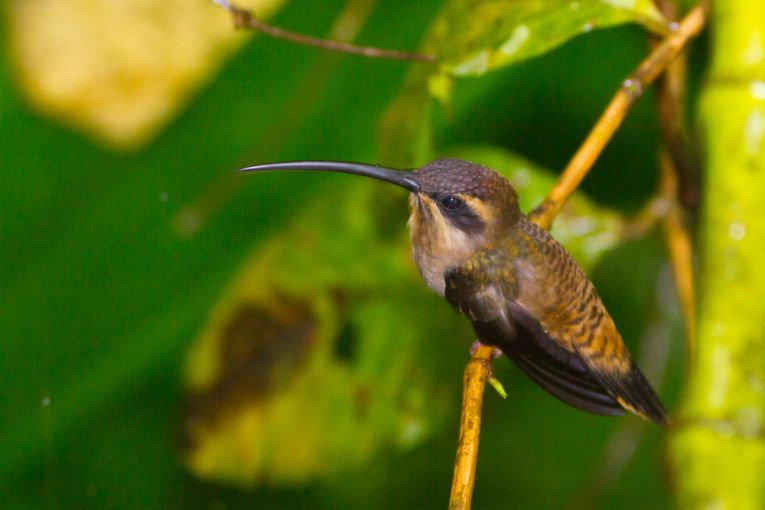When we learn a song, we have a memory that is capable of remembering how to sing a new version at any age, but some animals remember at a sensitive period early in their lives. Songbirds seem to remember their twittery at this learning period as they begin their singing career, but the parrots have open-ended learning just like ourselves. They learn at any age. Some humming birds have just been discovered to learn their tunes in the same way as songbirds, but now we have evidence that they have the neural connections to be more advanced, and the long-billed hermit, can emulate the parrots and us!
The rare ability of vocal learning in the three bird orders of parrots, hummingbirds and songbirds is associated with neural, developmental and social features. The long-billed hermit,Phaeothornis longirostris, is one of a large genus of hummingbirds centred on South America. The wild birds were studied in Costa Rica, at 4 leks, or mating grounds, of male hermits. 38,964 songs were recorded from 98 adults with about 11 males per lek each year. New songs seemed to be of a song-type present on the lek, but, twice, the research found a novel song-type that had been invented by the individual.
The new song could come from a late-in-life open-ended programme or a closed system whereby multiple songs are learnt at different leks and then switched around. Two birds here replaced their initial song with a song that appeared long after that, while two others came up with a never-before-heard song! Transfer between leks anyway is unknown, with only 4.1% of birds found at different leks, with only one individual actually singing at 2 leks.
With no song exchange between leks, there would be either novel song creation or simpler song modification taking place. 3 new song types from newcomers are now known in the species, showing that totally new invention seems a likely source of vocals. The wedge-tailed sabrewing has the most complex song studied in humming bird research. Now is the time to find out just how complex the brains behind this rare animal ability can have become.
Marcelo Araya-Salas and Timothy Wright published the paper in the Biology Letters of the Royal Society.










